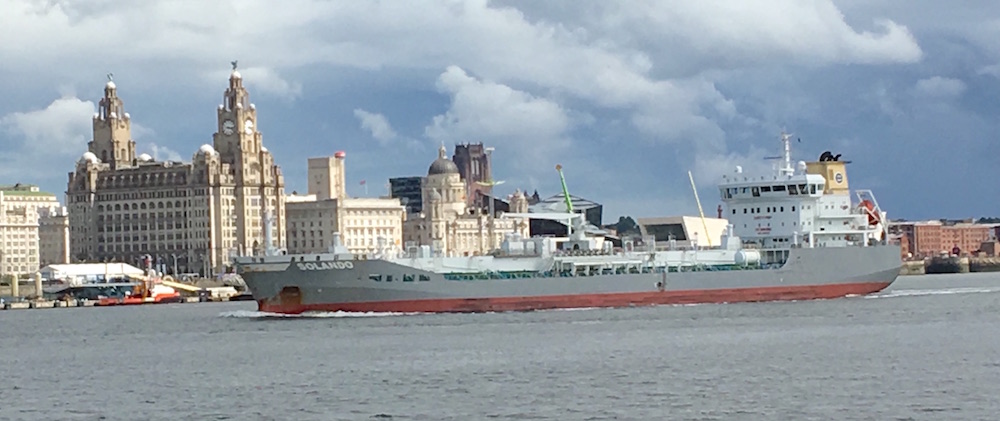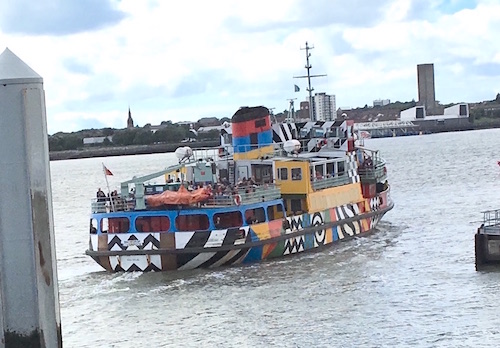Farthingale Publications
A Lancastrian hobby website of curiosities and nonesense

Introduction
 Iris and Daffodil at Zeebrugge 23 April 1918 - The Mersey ferries Iris and Daffodil referred to in the text below were built in 1906 at the Newcastle shipyard of Robert Stephenson for its client Wallasey Council.
Iris and Daffodil at Zeebrugge 23 April 1918 - The Mersey ferries Iris and Daffodil referred to in the text below were built in 1906 at the Newcastle shipyard of Robert Stephenson for its client Wallasey Council.
During the Great War, supply lines to and from the British Isles were being badly disrupted by enemy submarines based in the Belgian port of Zeebrugge. The harassment of merchant shipping in the English Channel and North Sea had become an everyday occurrence and something had to be done to reduce the losses. A plan was devised based on a proposal by Admiral of the Fleet John Jellicoe to mount a raid to neutralise the threat by blocking access to the German submarine base in the entrance to the Bruges canal. It was to be executed under the command of Admiral Roger Keyes and was to take place simultaneously with a smaller raid on Ostend. The raids involved a fleet of 70 ships in total providing backup and support for the main players, the battle cruiser HMS Vindictive, Mersey ferries Iris and Daffodil, an ageing class 3 submarine and three block ships Intrepid, Iphigenia and Thetis. Two further block ships, Brilliant and Sirius were to be sunk in the harbour at Ostend. A number of fast motor launches were to be used to take the volunteer crews from the block ships and the C3 submarine before scuttling.
The Plan
Battle cruiser Vindictive (built at Chatham Dockyard and launched in 1897) and the two Mersey ferries were to provide transport for a landing force of 200 seamen and a battalion of Royal Marines, putting them ashore on the mile-long mole protecting the harbour, to engage defence forces whilst the operation to position the block ships was in progress. A third strand to the plan designed to prevent reinforcements gaining access to the "Mole", involved destroying the viaduct connecting the "Mole" to the shore, by wedging the C3 submarine filled with explosives beneath one of the arches and detonating the charges. The two Mersey ferries were requisitioned by the admiralty and refitted in Portsmouth to remove furnishings, fit armour plating and be repainted in battleship grey in preparation for the raid which was to take place on 23rd April 1918.
The Execution
The raiding parties arrived off Zeebrugge and Ostend at midnight 22/23 April but a change in wind direction rendered the smoke screen cover ineffective and the element of surprise being lost, chaotic scenes and fierce fighting ensued as the three troop carriers attempted to land personnel on the mole under heavy artillery and machine gun fire. There were many casualties but the three block ships were able to enter the harbour as planned, only two however were sunk in the Bruges Canal (Intrepid and Iphigenia) the third (Thetis) was sunk close to the entrance as resistance intensified. The attack on the viaduct by the submarine however did achieve its objective and just over an hour after the start of the raid, the ships along with survivors started the withdrawal back to Dover. A heroic mission carried out by brave servicemen as witnessed by the eight Victoria Crosses subsequently awarded, but only partially successful and at great human cost. The occupying German forces were able to reopen access to the port within a few days creating alternative channels around the block ships. The raid on Ostend however resulted in complete failure when the block ships failed to identify the channel and navigate into the harbour and were beached outside.
The Aftermath
 The two ferries returned to England after the raid, the Daffodil relatively unscathed but the Iris badly damaged, both ships being repaired at Chatham Dockyard before returning to service on the Mersey. In recognition of their heroic efforts in the Zeebrugge raid, the King honoured both ferries, allowing their renaming Royal Iris and Royal Daffodil. Subsequently HMS Vindictive was chosen to play the major role in a second attack on Ostend harbour on 10th May 1918 when she was used as a block ship and sunk there. After the war the wreck was raised and broken up, the bow section however was preserved and remains in Ostend as a memorial to the raid and those that died.
The two ferries returned to England after the raid, the Daffodil relatively unscathed but the Iris badly damaged, both ships being repaired at Chatham Dockyard before returning to service on the Mersey. In recognition of their heroic efforts in the Zeebrugge raid, the King honoured both ferries, allowing their renaming Royal Iris and Royal Daffodil. Subsequently HMS Vindictive was chosen to play the major role in a second attack on Ostend harbour on 10th May 1918 when she was used as a block ship and sunk there. After the war the wreck was raised and broken up, the bow section however was preserved and remains in Ostend as a memorial to the raid and those that died.
Palfreyman May 2018.
